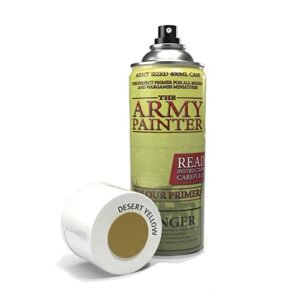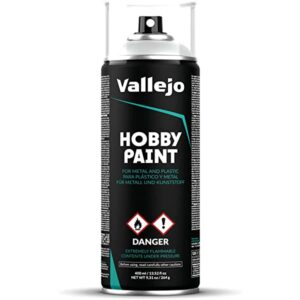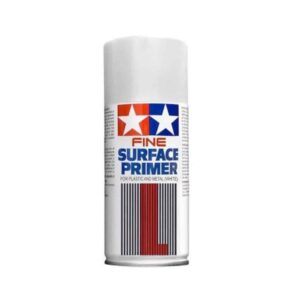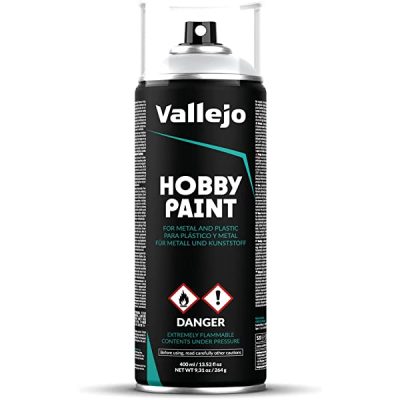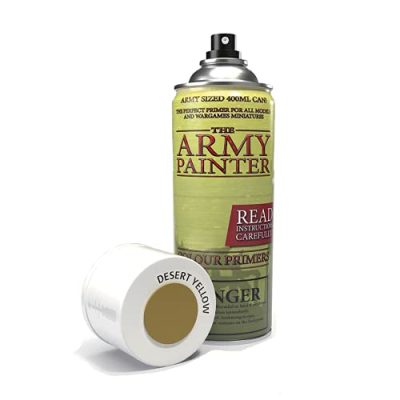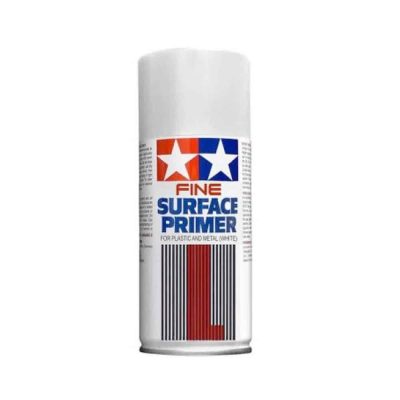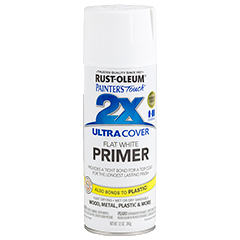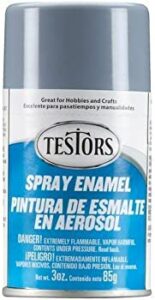- Last Updated: January 12, 2024
-
 Pat Nathaniel
Pat Nathaniel
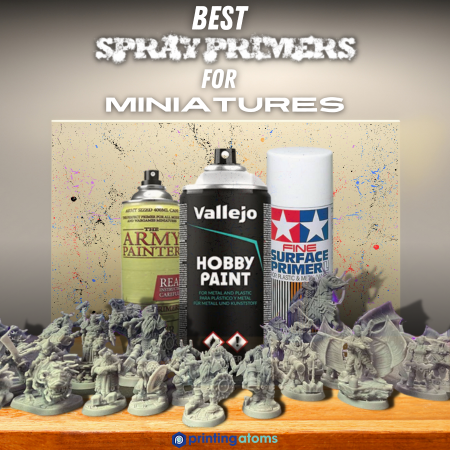 You’ve spent hours on a perfect, flawless paint job for your favorite miniature — and then it flakes and falls off.
You’ve spent hours on a perfect, flawless paint job for your favorite miniature — and then it flakes and falls off.
To prevent this nightmare scenario, you need to prime your models. I like to prime my miniatures with spray primers because they’re cheap and easy to use.
But there are many spray primers out there and not all of them work with all kinds of miniatures. I wrote this guide to the best spray primers to help you find the right spray primer to protect your miniature masterpieces.
Table of Contents
- Best Spray Primers For Miniatures At A Glance
- Spray Primers: The What, Why, and How
- What Is A Primer?
- Why Do You Need to Prime Miniatures?
- What Type of Primer You Should Use for Miniatures?
- How to Prime Miniatures With Spray?
- How Long Does it Take for a Primer to Dry?
- Is Using Spray Primer Safe?
- What is the Best Color to Use When Priming Miniatures?
- Considerations for Spray Primers
- Considerations for Primer Application
- Can You Paint Miniatures Without Priming Them?
- Difference Between Primer and Paint
- Prime Well, Paint Well
Best Spray Primers For Miniatures At A Glance
1. Vallejo Hobby Paint Spray (Editor’s Choice)
2. The Army Painter (Best Value)
3. Tamiya Surface Primer (Premium Choice)
4. Rust-Oleum 2x Ultra Cover (Best Coverage)
5. Testors Enamel Primer (Most Versatile)
I can’t say enough good things about Vallejo. Their Model Color and Game Color paint lines are legendary for a reason, and the spray primers offer much of the same.
They’re simply the best miniature spray primers currently available.
It’s hard to even write about Vallejo sprays because they’re so reliable. What can I say about primers that do their job perfectly with every application?
The primer applies smoothly and evenly. The only time I’ve worried about grainy or uneven surfaces was when I tried the Vallejo sprays for the first time and didn’t know what to expect.
Vallejo’s coverage is great — I can often get away with a single coat of primer. Yet, the primer isn’t so thick that it would clog up details. Even the stupidly shallow details on my old plastic Battletech models show up nicely through the primer coat.
Finally, the sprays are available in a wide range of colors. On top of black, gray, and white, Vallejo offers 28 different colors (including metallics) that match Vallejo’s paints. Whether you’re priming fantasy or WWII models, there’s a color for you.
Yet, the primers have their problems — but the issues are not with the paint quality.
First, Vallejo paints are notoriously difficult to find in stock. Second, their price can be pretty high due to limited availability.
If you can get your hands on Vallejo surface primer, though, get it. You won’t be disappointed.
Pros
- Great coverage
- Even application
- Wide color range
- It just works
Cons
- Pricey
- Hard to find in stock
I remember when The Army Painter first launched. They aimed to offer an alternative to at-the-time dominating miniature paints (coughCitadelcough) that provided more bang for your buck.
Well, mission accomplished. The Army Painter spray primer range offers decent performance at a good value.
The sprays are affordable and widely available. They’re in practically every FLGS, hobby store, and website and don’t cost much. If you want your spray primer on a budget, The Army Painter is the way to go.
Additionally, The Army Painter has a wide color range. Don’t feel like undercoating? Don’t — just use a primer with a color that fits your paint scheme.
Finally, the sprays are color-matched to The Army Painter’s paints. If you’re a fan of The Army Painter range, it makes keeping color schemes consistent easy.
Unfortunately, there are a couple of issues I must mention.
The sprays’ consistency and quality swing wildly from spray to spray. I really liked the Pixie Pink (don’t judge) and it always came out smooth. On the other hand, the white spray is notorious for ending up chalky and rubbing off.
The primer is also ridiculously sensitive to temperature and humidity. You may accidentally end up spraying your miniature too thickly and clog up details just because of the weather.
With all that said, The Army Painter can be perfectly good when the stars align. I use some of their paints, despite everything — that’s how much value they pack.
Pros
- Affordable
- Easy to find
- Lots of colors
- Color-matched to Army Painter paints
Cons
- Inconsistent quality and adhesion
- Weather-sensitive
Ah, Tamiya. If there’s a standard name in modeling, whether you’re into cars or Gundams, it’s Tamiya.
With that gold-standard reputation, it’s no wonder that Tamiya spray primer is of professional quality. It performs excellently, just as a pro should.
Unlike Vallejo or The Army Painter, Tamiya’s surface primer is lacquer-based. It’s very thin so the primer smoothly, and it has great coverage.
You can get even, thin coats without hassle.
The paint adheres to plastic extremely well, and it can also work with metal. It provides a great, hard painting surface that you won’t have to worry about chipping.
That said, it does take fairly long to dry. I also wish they had more color options than white and gray.
Due to the lacquer base, the primer is fairly easy to strip if you make a mistake. However, you need toxic solvents and denatured alcohol.
Speaking of toxic, inhaling lacquer primer is an even worse idea than huffing acrylic paint. Make sure to mask up and use gloves. Also, this stuff is extremely flammable.
Then there’s the price. Tamiya’s surface primer seems cheap at first until you realize how little primer you get. Case in point, a Vallejo or Army Painter spray can contains more than twice as much primer.
But if you want an excellent professional-level spray primer, Tamiya Surface primer is worth it. It’s such a pleasure to prime with that you just want to keep doing it.
Pros
- Applies smoothly and evenly
- Great coverage
- Excellent adhesion
- Hard and durable surface
Cons
- Expensive and small cans
- Use requires caution
- Limited color range
Want to know a little secret about priming miniatures? You don’t need a special miniature spray primer.
Regular spray primer can work just as well — or even better. Rust-Oleum 2x Ultra Cover is my go-to primer because of its awesome coverage and low price.
This spray paint is designed for priming big surfaces and to last in outdoor weather. A couple of quick sprays and I get a super durable, smooth surface for painting. It doesn’t matter if I’m spraying plastic, metal, or resin models.
Rust-Oleum is a generic paint brand, so you can find this primer everywhere. I usually pick up a can while doing my grocery shopping.
Finally, it costs peanuts. You can get two or even three cans of Rust-Oleum for the price of one Vallejo can.
But you need to use this stuff very carefully.
Rust-Oleum is thicker than dedicated miniature spray primers. Careless application easily clogs up details.
I wouldn’t necessarily recommend these sprays for beginners, and it’s also why I don’t list them as the “best value” choice.
The color range is limited to the basic white, gray, and black primer. It’s enough for painting any model, but if you’re used to color primers, look elsewhere.
Finally, Rust-Oleum also makes a line of “Primer & Paint” sprays and you might get the two confused. Do not use Primer & Paint on miniatures — you will ruin your model.
With all that said, Rust-Oleum is currently my favorite spray primer. You just can’t beat the coverage and price.
Pros
- Excellent coverage
- Very durable
- Dirt cheap
- Available everywhere
Cons
- Not formulated for miniatures
- Challenging to use
- Limited color range
If you’ve ever been to a hobby or crafts store, you know Testors. Their products are everywhere because they’re good, reliable, and produce great results.
I can say the same about their enamel primer. It’s a very versatile and easy-to-use spray primer.
This enamel-based surface primer competes directly with Tamiya, so it had better be good quality — and it is. The paint has a nice, thin consistency and it’s very straightforward to apply even coats with quick spray passes.
As an enamel-based primer, this stuff works for just about any kind of model you want to build. The surface it creates is hard and durable, so you can paint metal, plastic, and resin miniatures without worrying.
Enamel isn’t water-soluble, so this primer lets you make cool chipping effects with acrylic paints.
But, just like with its Tamiya competitor, the fumes coming off the enamel primer are highly toxic. Please make sure to wear a good mask and gloves when you use this spray.
Testors has a good range of colors available, but as enamel sprays, they tend to discolor when exposed to sunlight. Also, the “white” sprays are off-white, so take that into account before you use them.
Finally, Testors paints come in even smaller cans than Tamiya. If you need to prime a lot of miniatures, these sprays can quickly get expensive.
As long as you take the right precautions, Testors spray primers make priming any model quick and easy.
Pros
- Applies smoothly
- Good paint consistency
- Works with any material
- Widely available
Cons
- Tiny cans
- Expensive
- Toxic fumes
- Can discolor
Spray Primers: The What, Why, and How
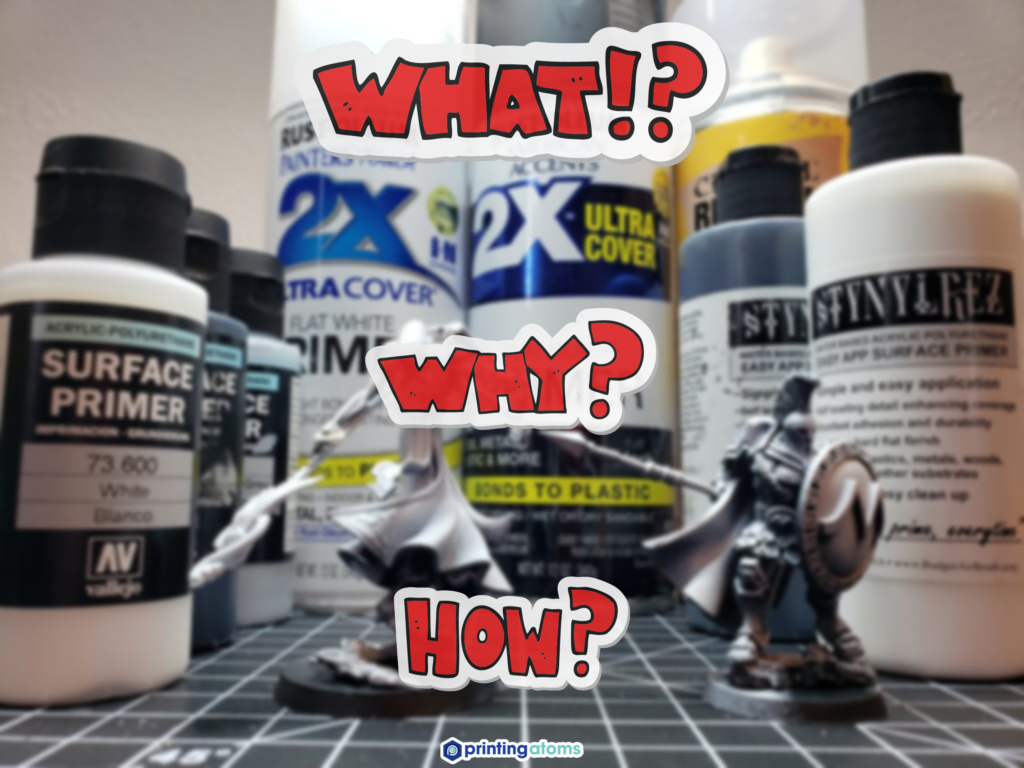
Primers can help make your miniature paint jobs much smoother, more vibrant, and plain better-looking. But how do they do that? And do you even need a primer?
Let’s go through the basics of primers — and why you should use them.
What Is A Primer?
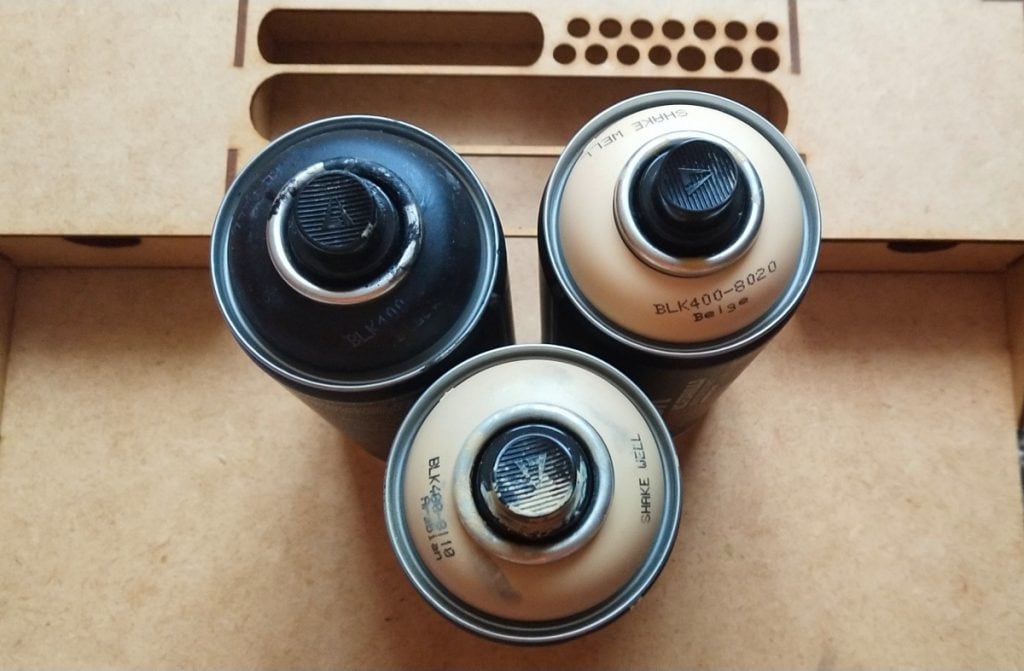
Primer is a special kind of paint used to prepare surfaces for painting. It smooths out imperfections, unifies the surface, and allows paint to adhere to your miniatures better.
Primers come in many different formulations, from brush-on primers to spray primers and airbrush primers. But they all have the same basic job — preparing your miniatures for painting.
Why Do You Need to Prime Miniatures?
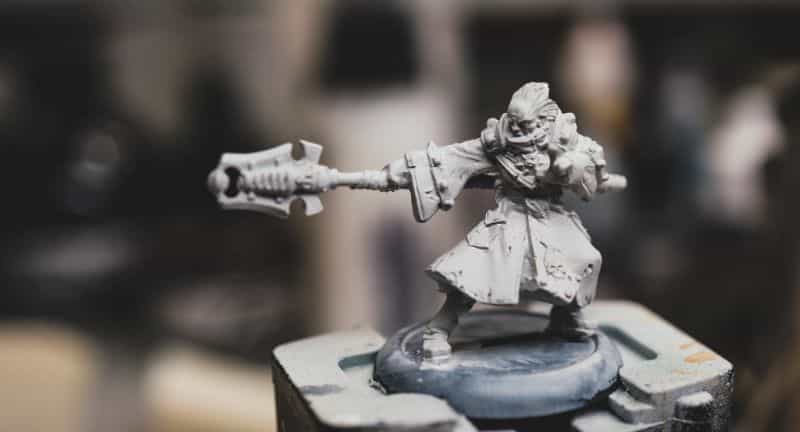
You should prime your miniatures because the primer makes painting them easier. As I mentioned, primer creates a uniform, slightly porous surface that allows the paint to stick to the model and prevents chipping in the long run.
Technically, you don’t need to prime miniatures — when I was a kid, I painted mine without ever hearing about primer. I strongly recommend doing so, though, if you want your models to look good and remain in good condition.
What Type of Primer You Should Use for Miniatures?
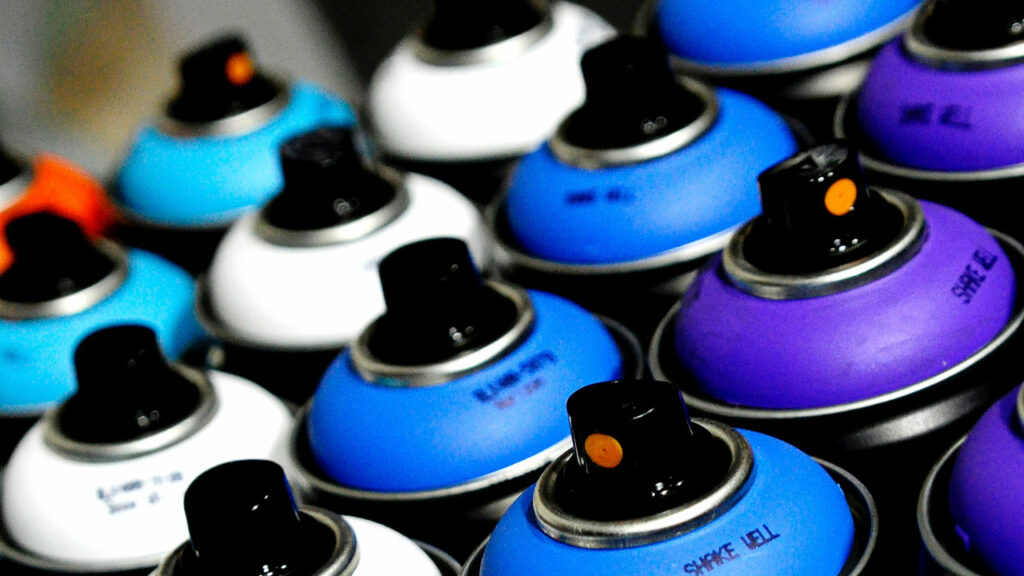
In general, I recommend priming with dedicated hobby primers, especially if you’re a beginner. Whether spray or brush-on, these primers are a bit thinner than general primers, which makes them less likely to clog details on your models.
But you can in theory use any kind of primer on miniatures. As I mentioned in the reviews, my favorite is Rust-Oleum, which is a general-purpose paint primer.
Just steer clear of paint/primer combos. They’re so thick that even thin layers will turn your model into a shapeless blob.
How to Prime Miniatures With Spray?
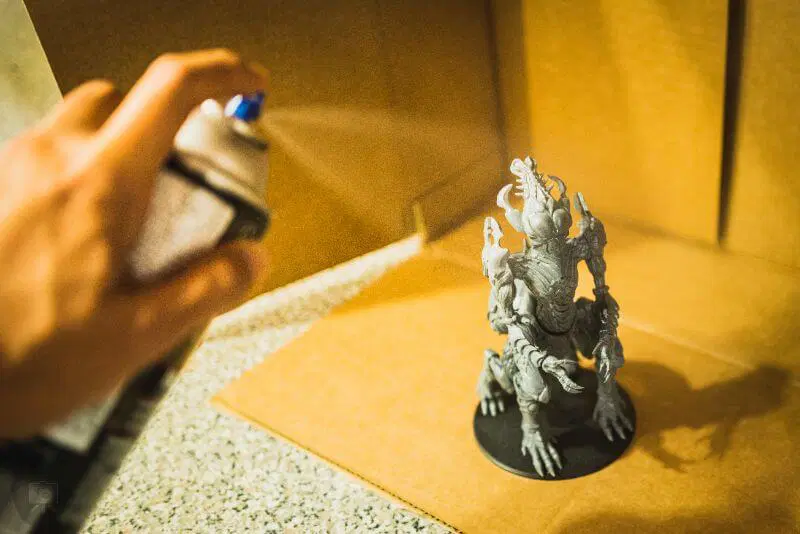
Miniature spray priming is pretty easy once you get some practice under your belt. I follow this basic process with any spray primer:
- Make sure the spray can is at room temperature.
- Shake the can vigorously for 5 minutes before priming.
- Stick your models to a long handle. I often use a piece of stiff cardboard and attach my miniatures with poster putty.
- Move to a well-ventilated room or outside to spray.
- Hold the nozzle 6-12 inches away from the models.
- Spray in short bursts, moving the can horizontally across the models. Start spraying slightly before the nozzle is above the models to ensure an even coat.
- Angle your miniatures slightly differently and repeat the spray process until you have a smooth layer of primer.
How Long Does it Take for a Primer to Dry?
The drying time depends entirely on the brand and type of primer. Some primers dry in 10 minutes, but other types can take up to 30 minutes.
To be on the safe side, I leave my miniatures to dry for at least an hour before painting.
Is Using Spray Primer Safe?
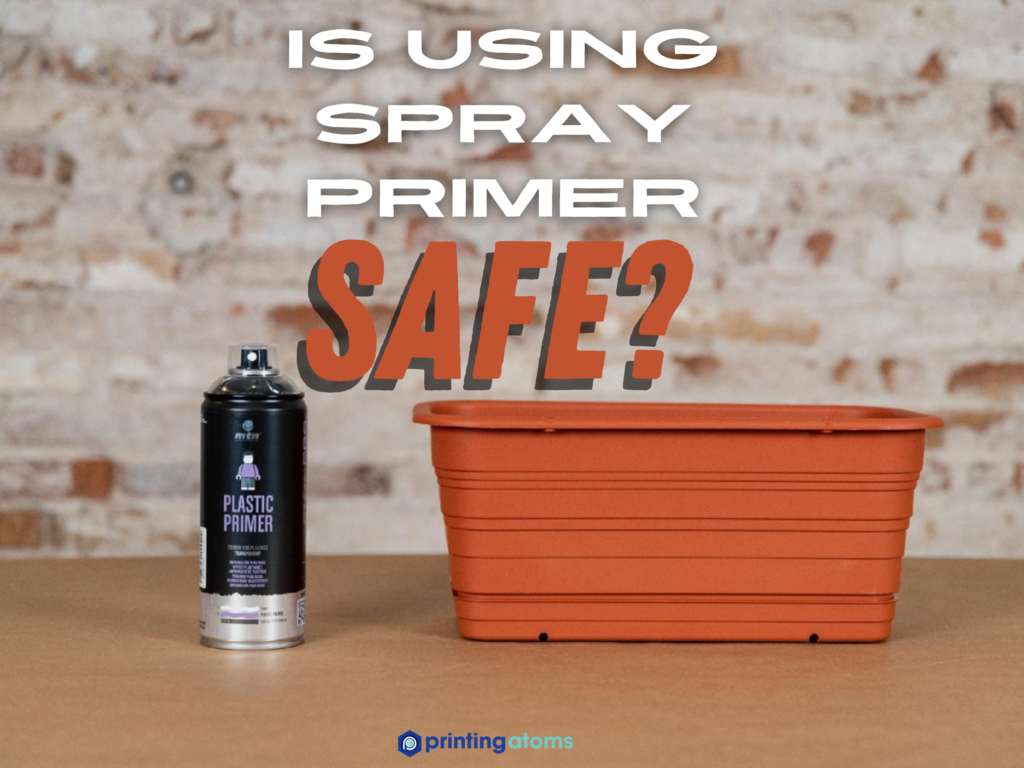
Spray primers — no matter the kind — can be harmful and toxic. You need to exercise caution and protect yourself when using them.
Here are my safety tips for using spray primers:
- Spray in a well-ventilated room or outside.
- Always wear a painter’s mask when using any spray paints.
- Wear gloves and a long-sleeved shirt to prevent the paint from getting on your skin.
- Do not spray primer or paint around other people.
- Place some kind of a backdrop, like a sheet of cardboard, behind your miniatures to catch overspray.
What is the Best Color to Use When Priming Miniatures?
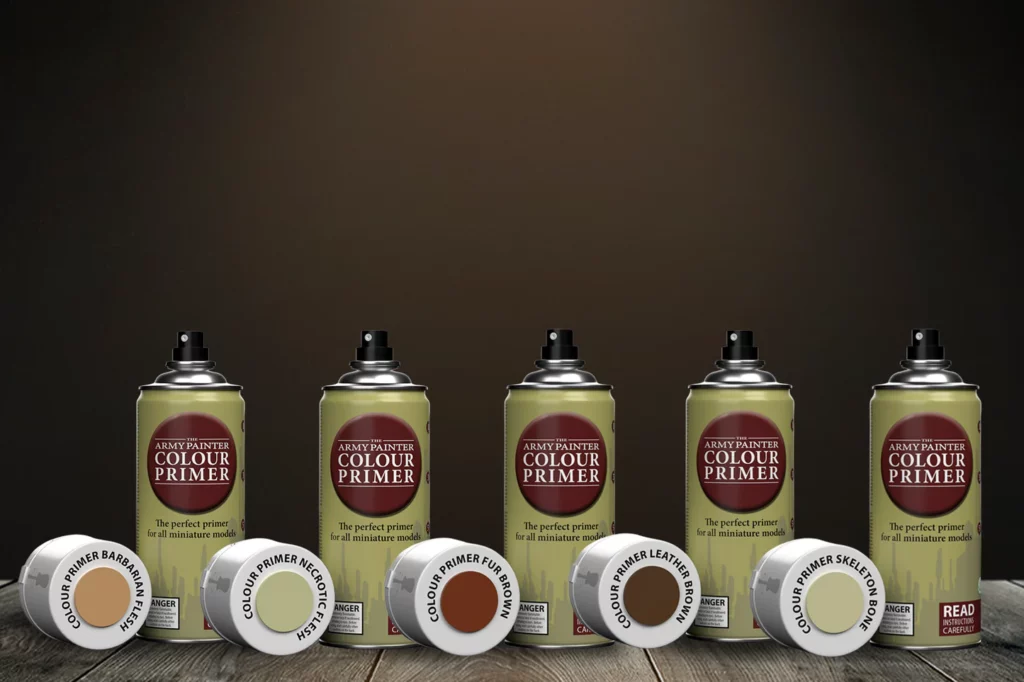
Which color you should use for priming your miniatures depends on what you want. The important thing to remember is that the primer color will affect the tone of the rest of the paint job.
In general, a gray primer creates a jack-of-all-trades surface that works for any paint scheme.
If you’re painting very dark or grimy miniatures — like, say, Chaos Space Marines for WH40K — a black primer makes them appropriately grim. Meanwhile, a white primer is best for bright and vibrant colors, such as a bard’s or jester’s costume.
Finally, colored primers can work as a basecoat to save you time when painting miniatures. Try to pick a darker color than your mid-tones so the primer can act as a natural shadow effect.
Considerations for Spray Primers
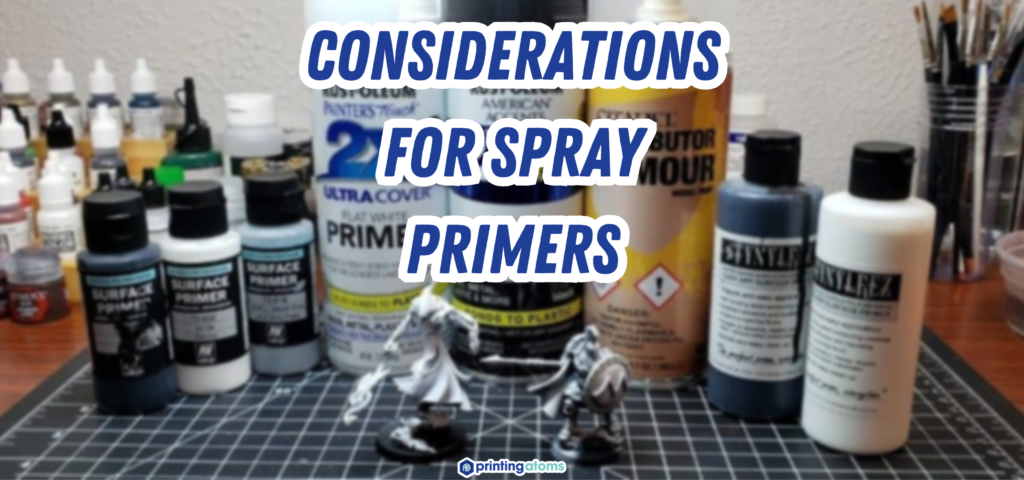
If you’re buying your first spray primer, you might be wondering what you should pay attention to when making your choice. I recommend considering these factors when picking your spray:
Adhesion
Pick a primer that adheres firmly to your miniature’s material. Not every primer works great with, for example, metal surfaces, and could lead to paint flaking off your miniature.
Coverage
The better the coverage of a spray primer is, the fewer passes you need to get a nice, smooth coat and the quicker you can get to painting. However, too much coverage will clog details, so I recommend avoiding automotive primers, for example.
Durability
Everything decays over time, and so does your primer. A good, durable spray primer (like Tamiya) will keep your miniatures looking great for years.
Value
Dedicated hobby primers work best for miniatures, but they can be very expensive. Try out a few different brands to find one that’s a fit for your budget and models.
Considerations for Primer Application
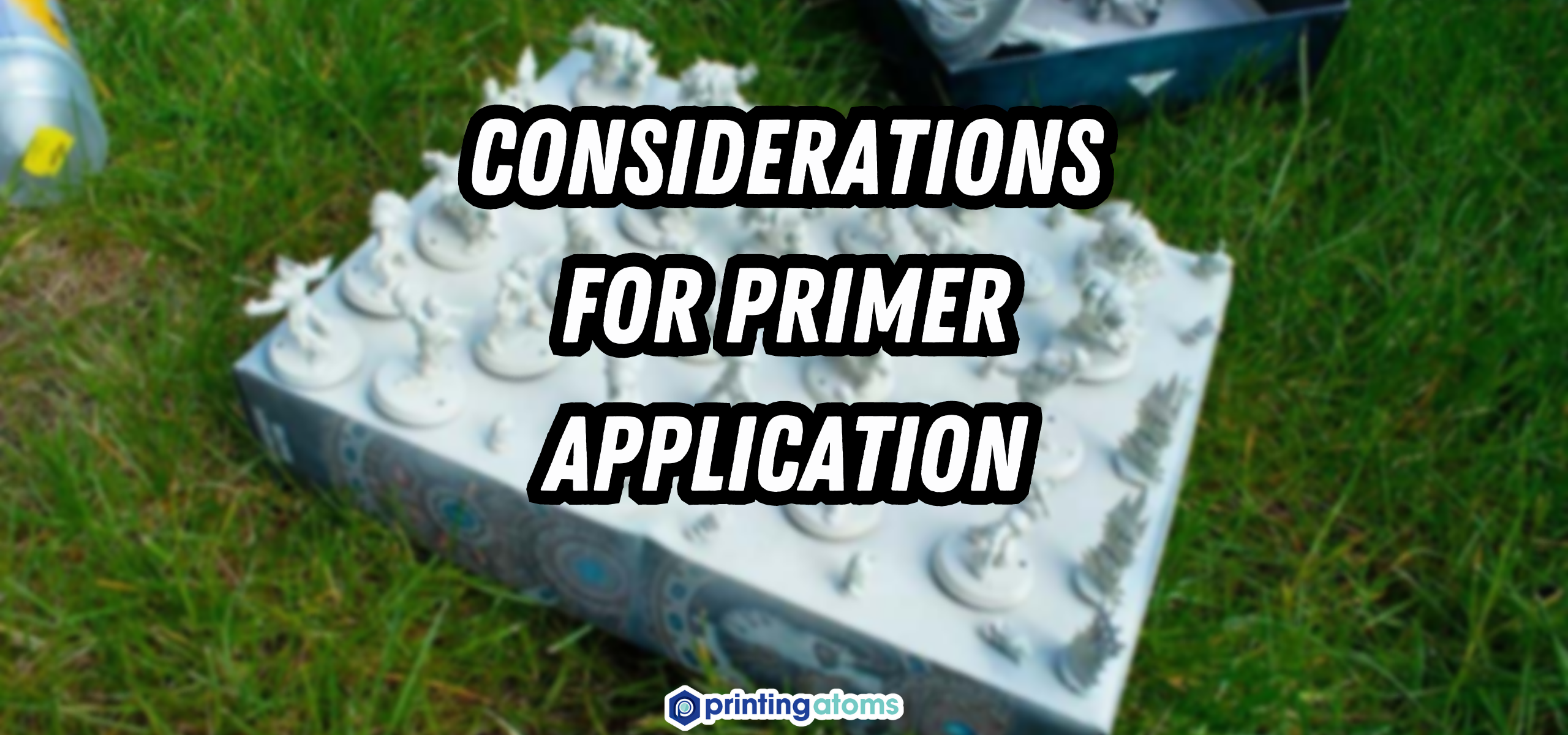
Before you start spraying miniature primers, you should think about when and how you do it. Consider these things before you pull on your mask and start spraying.
Color
I mentioned it already, but this point is worth repeating. The primer will always faintly shine through your paint job. Pick a color that complements your planned paint scheme. Here are my basic recommendations:
- Gray primers work for nearly every paint job
- Black primers for dark, menacing color schemes
- White primers are the best for bright and vivid colors
- Colored primer can save you the hassle of painting a separate base layer
Temperature
You need to consider two different temperatures when spray priming miniatures — the primer’s and outdoor temperature.
The primer should be room temperature or slightly warmer before you spray to ensure proper paint flow. If your spray can is very cold, you can put it in a warm water bath to heat it up.
The outdoor temperature should be between 50-90°F. If it’s too cold, your primer will solidify in the air and result in a chalky, uneven coat. Similarly, too hot air will dry the paint in the air and also produce a bad result.
Humidity
You shouldn’t prime your miniatures when the relative humidity in the room or outside should be around 50%.
If the air is too humid, it will prevent the primer from drying properly and result in a gummy, sticky surface that ruins your paints. When the air is too dry, the primer may solidify before it hits your miniature, which produces an uneven and chalky surface.
Finish
I recommend always using spray primers that result in a matte finish on your miniature. This kind of surface soaks the paint in just a little bit, which allows it to stick to your model very well.
If you use a gloss primer, you may notice that the paint is more likely to chip off the model. Glossy primers can still work, but you need to handle your models with more care.
Can You Paint Miniatures Without Priming Them?
Strictly speaking, you can paint models without priming. But I really don’t recommend doing so.
Miniature paints don’t stick well to very smooth and hard surfaces, like the plastic or metal your models are made of. Without a primer, the paint is very likely to chip and fall off with the slightest bump. If you care about preserving your hard work, you really should prime your miniatures.
Difference Between Primer and Paint
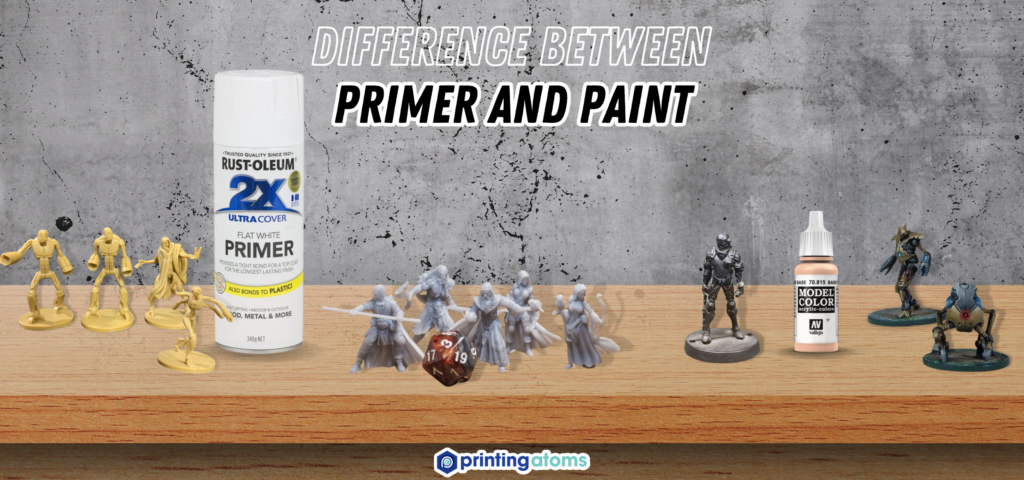
Technically speaking, primer is paint — but it’s a special kind of paint. Primers are formulated to stick well to the underlying surface and create a more solid and smoother surface for regular paints.
Regular paints, meanwhile, are eye candy. Their colors are much more vivid, but their adherence is lower than primers’.
You can think of primers and paints as a foundation and a house. Without the foundation, the house will fall down — without primer, your paint will fall off the miniature.
Prime Well, Paint Well
When I started painting miniatures years and years ago, I didn’t use a primer. I quickly learned how important priming models is if you want your paint jobs to look good and last long.
My suggestions will make shopping for a spray primer for your miniatures easier. But if you’re still a bit lost about which spray you should pick, here are my recommendations:
- Vallejo Hobby Spray Paint is the single best miniature primer — but it can be hard to find.
- The Army Painter makes decent budget-friendly primers.
- Rust-Oleum has incredible coverage, if you’re willing to learn how to use it.
- Both Tamiya and Testors make premium spray primer that just works.




